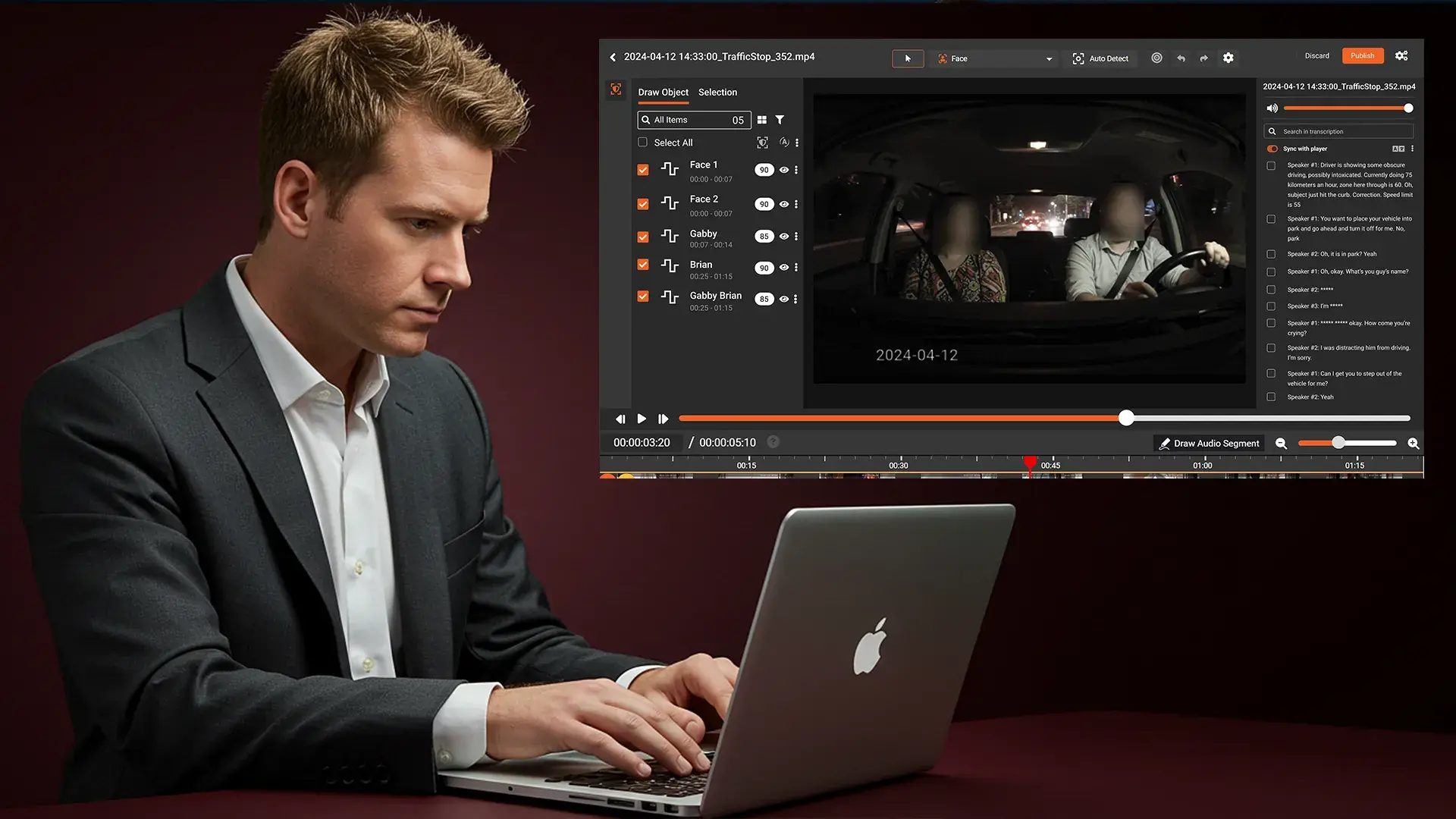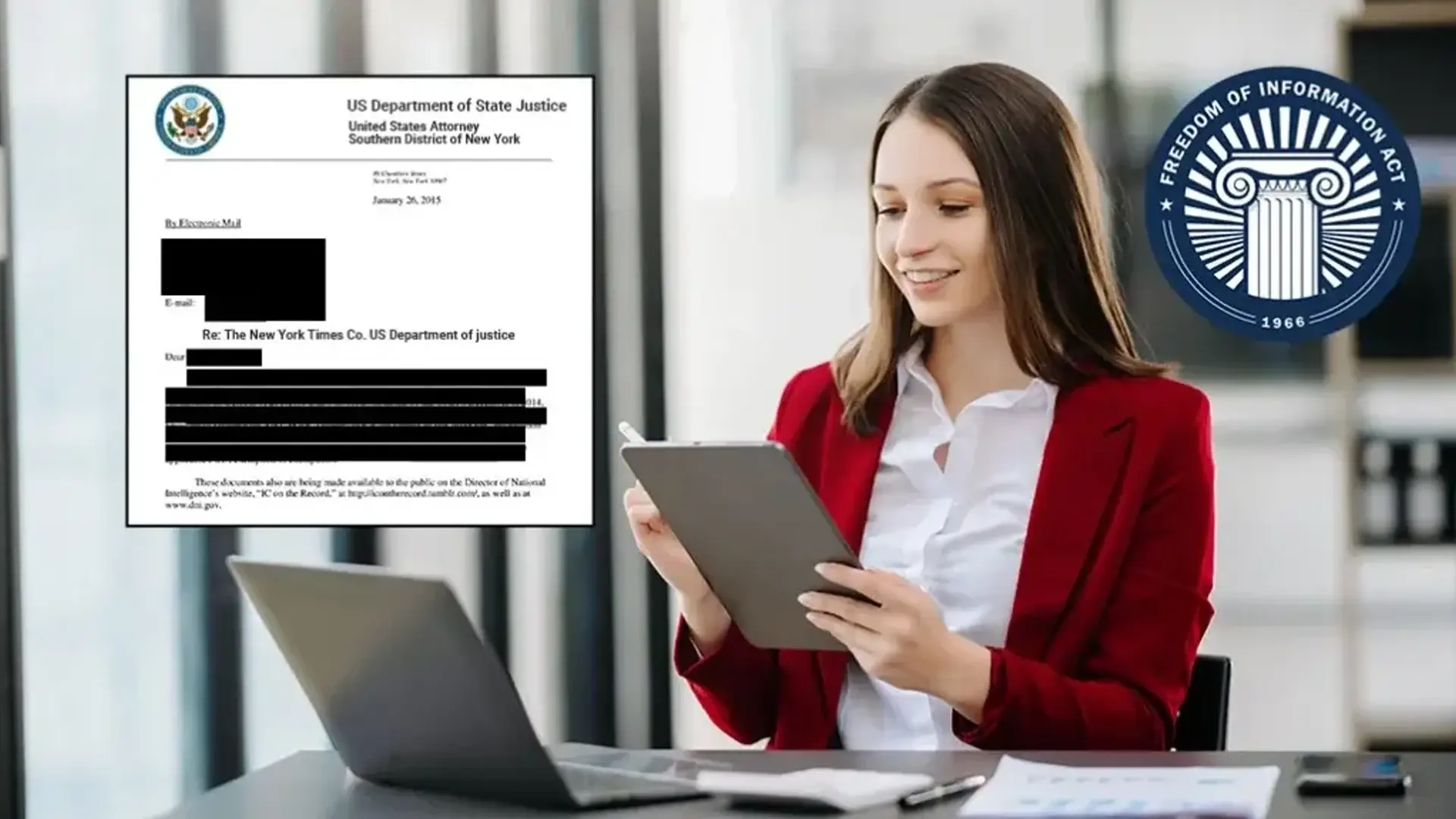Why Government Agencies Need a Unified Redaction Platform in 2025
by Zain Noor, Last updated: December 1, 2025

Government agencies today operate in a landscape where public transparency requirements continue to rise, case volumes grow every year, and digital evidence expands in complexity and size. What once was a predictable public records process involving typed documents has transformed into an environment filled with body-worn camera footage, surveillance video, jail calls, 911 recordings, social media content, scanned archives, and mixed-format documents that contain sensitive data.
Despite this major shift, most agencies still rely on outdated or disconnected tools for redaction. Staff frequently jump between Adobe for PDFs, a separate solution for video, another for audio, and several internal processes for submission, review, and delivery. Each of these systems works in isolation, creating inefficiency, delays, and a higher risk.
In 2025, the pressures on FOIA and FOIL teams have reached a level that makes this fragmented approach costly, slow, and unsustainable. Agencies now require a system that brings everything together in one secure place.
This is why unified redaction platforms have become essential.
The Volume and Complexity of Modern Evidence
Public records teams face a wider range of content types than at any point in history. Requests often include:
- Body-worn and in-car camera recordings
- Surveillance footage from municipalities, transportation agencies, courthouses, offices, and public spaces
- 911 calls, dispatch logs, and radio communications
- Scanned case files, historical documents, and low-resolution PDFs
- Photos collected through investigations or citizen submissions
- Audio from interviews, interrogations, witness statements, and meetings
- Digital evidence extracted from computers or mobile devices
- Video and audio shared from social media platforms
Each of these can contain sensitive information such as faces, minors, addresses, health data, financial details, and other personal identifiers. Agencies must ensure that these details are protected before releasing any information to the public, attorneys, court systems, or media organizations.
The modern environment has made redaction a multi-format challenge rather than a document-focused task.
Where Current Tools Fail Government Agencies
Many organizations depend on a patchwork of software that was never designed to support the scale and variety of today’s records. Common limitations include:
Manual workloads
Most redaction tools used by agencies offer limited automation. Staff must manually scroll through videos, listen to audio clips from beginning to end, and review long PDFs page by page. This often results in many hours of repetitive work.
Lack of automation
Tools like general document editors or standalone video editors do not automatically detect faces, license plates, names, or addresses. Analysts are left to identify and mask sensitive information by hand.
Inconsistent processes
Different departments may use different tools, which leads to varying redaction quality, mismatched formats, and no unified standard for compliance.
No central evidence management
When files are stored in separate tools, email threads, USB drives, or department systems, the chain of custody becomes difficult to track. FOIA processes require transparency and accountability.
Security and sharing risks
Emailing files or distributing them on physical media increases exposure risks. Many agencies still rely on these methods because they lack secure digital sharing options.
High chance of human error
The more manual the workflow, the more likely it is that sensitive information is overlooked. This exposes agencies to legal challenges and public criticism.
Government teams face increasing workloads with shrinking or limited staffing, making these challenges even more significant.
The Move Toward Unified Redaction Platforms
A unified redaction platform consolidates all formats and workflows into one environment. Instead of jumping between tools, all PDF files, audio recordings, video footage, and evidence types are uploaded, reviewed, redacted, stored, and shared in one system.
The benefits go far beyond convenience.
Multi-format redaction
One platform handles everything:
- PDF redaction
- Automatic audio redaction
- Automatic video redaction
- Mixed media support
- Scanned document analysis
- Transcript-based redaction for audio and video
This eliminates the need to purchase, learn, and maintain multiple tools.
AI-driven automation
- Faces
- License plates
- Screens
- Identities in speech
- Text in video frames
- Sensitive document fields
- Scanned content
- Structured and unstructured PII
This reduces the time staff spend on manual identification and allows analysts to focus on final validation.
Batch and bulk processing
Agencies can process hundreds or thousands of documents or videos at once. This is especially important for large FOIA requests, litigation discovery, or high-volume agency operations.
Chain of custody and audit logging
Centralized systems automatically track every upload, change, review, and export. This helps agencies maintain compliance and demonstrate transparency during audits or court challenges.
Secure evidence sharing
Instead of distributing files by USB, agencies share content through secure links with access controls and expiration dates. This protects sensitive information while allowing authorized parties to access what they need.
Standardized workflows
Departments can align on a single process, achieving consistency in redaction quality and compliance.
Why Unified Redaction Is Becoming the Standard in 2025
Government agencies that have adopted unified redaction systems report clear improvements:
Faster turnaround times
AI-driven detection and transcript-based review significantly reduce the time needed to process requests.
Reduced backlogs
Departments with high FOIA/FOIL demand can reduce months-long backlogs to manageable workloads.
Lower operational costs
Consolidating tools lowers licensing fees, reduces training requirements, and minimizes IT overhead.
Improved accuracy
Automation reduces the chance of missing sensitive information, which protects agencies from costly errors.
Higher staff productivity
Analysts spend less time on repetitive clicking and manual scanning and more time on higher-value review tasks.
Better public trust
Consistent, accurate, and transparent redaction results improve agency credibility and community confidence.
The Future of Redaction Will Be Unified and AI-driven
The direction is clear. Public agencies must manage more content than ever, but budgets and staffing levels rarely increase at the same pace. To keep up, agencies are embracing systems that combine automation with secure processes and centralized workflows.
Unified redaction solutions offer the best path forward because they:
- Consolidate all formats
- Remove bottlenecks caused by outdated tools
- Increase accuracy
- Improve compliance
- Modernize operations
- Support future AI capabilities
The agencies adopting these platforms today are building the foundations for a more efficient, transparent, and resilient public service.
How VIDIZMO Redactor Supports Government Redaction Workflows
VIDIZMO Redactor provides a unified platform designed for agencies that manage high volumes of PDF, audio, and video evidence. It offers AI-assisted detection for PII across all formats, including faces, license plates, names, addresses, text within frames, and sensitive spoken information. Teams can redact directly from transcripts for audio and video, apply automated mask tracking, and process large batches of files at once.
The platform includes secure evidence storage, full audit logs, configurable FOIA and FOIL code presets, and controlled sharing to ensure compliance with public disclosure and legal requirements. Agencies use VIDIZMO Redactor to reduce manual workload, lower the risk of missed redactions, and complete requests faster with consistent results across all departments.
Jump to
You May Also Like
These Related Stories

Top Redaction Failures and How to Prevent Them

Streamlining FOIA Requests: How Redaction Software Empowers Agencies


No Comments Yet
Let us know what you think